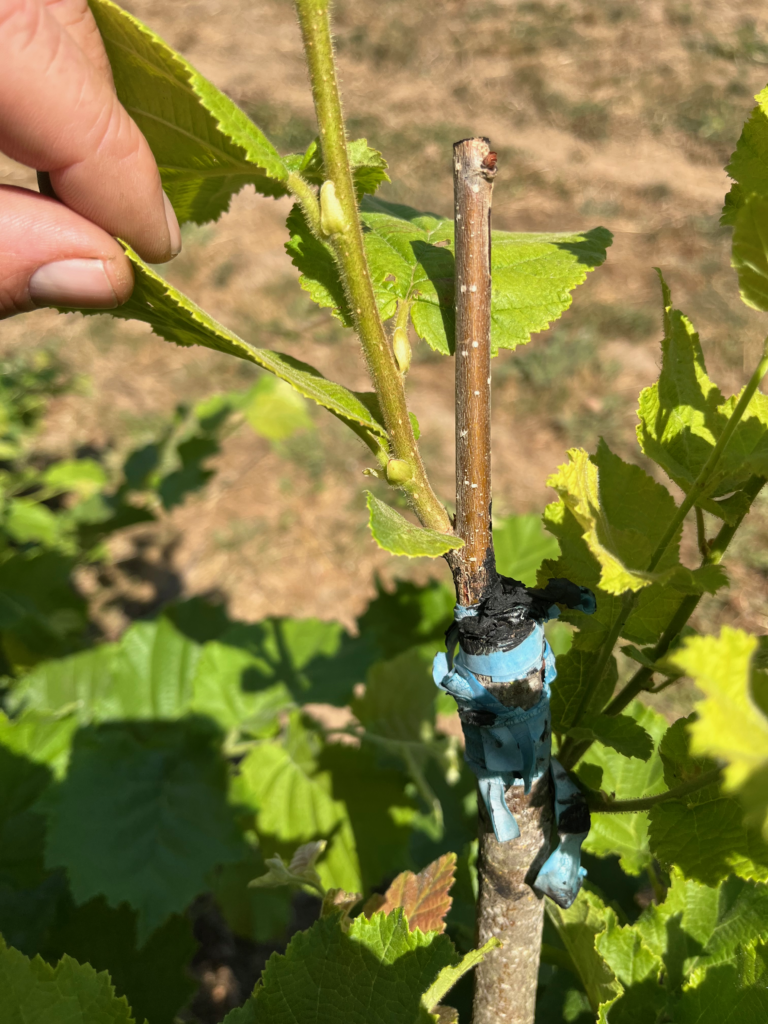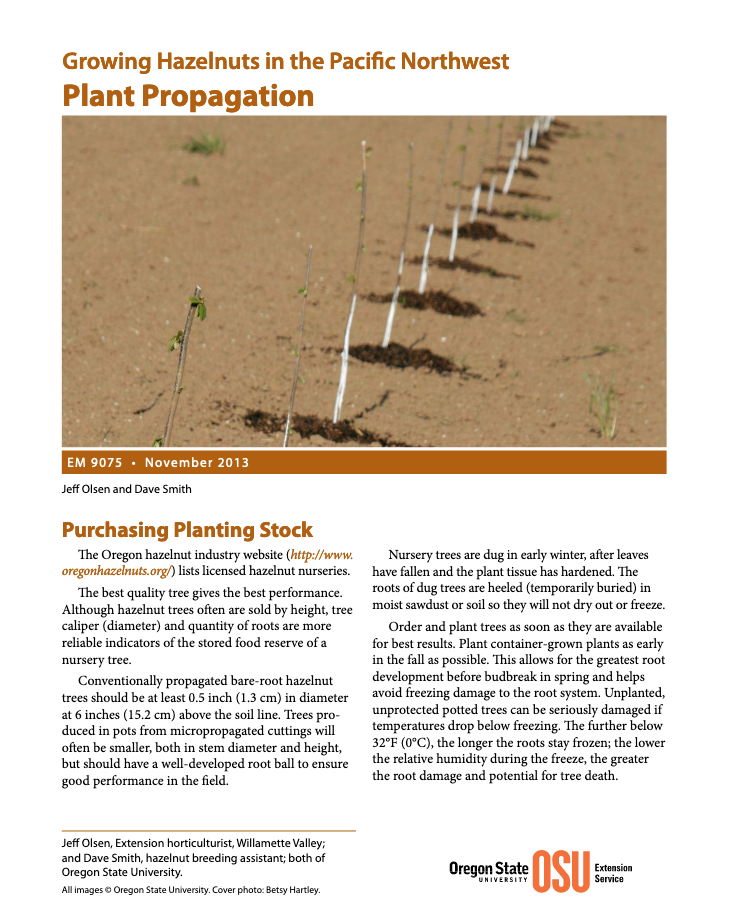




Field grafting of hazelnuts has been practiced for many years in Oregon but is not a widespread or common practice. Some in the industry such as David Smith of the OSU Hazelnut Breeding Program have a wealth of knowledge on the practice. Probably the most common application for field grafting has been to correct issues with pollenizer trees in an established orchard. To compensate for lack of compatible pollen, improve spatial distribution of pollen, or to simply bring in some new sources of pollen, individual scaffold branches are grafted over to the new pollenizer variety. This technique also allows a single tree to become a source of different pollen types for the production trees.

The document EM9075 from the OSU Extension Catalog by the late Jeff Olsen and David Smith has a small section on field grafting techniques. Hazelnuts are somewhat tricky to graft compared to fruit trees like apples, and the Extension document notes that results are not always completely satisfactory. One of the issues noted in EM9075 is that hazelnuts can push a lot of sap against the graft, preventing good take. Field grafting must be performed when there are shoots with leaves on the rootstock (nurse limbs) to absorb sap pressure so that grafts are not overcome by sap. That means shoots of the rootstock must be leafed out and conserved until the scions are established enough to nurture the tree. In contrast, the scions should be in a completely dormant state at the time the graft is made. The scion is collected mid-winter and held under cold storage. Conditions at the time of grafting can’t be too hot or the scions will dry out before they have enough vascular connection with the root stock to support the leaves. Moderate warm temperatures around 70 F in mid April to mid May are ideal, but this season (2022) was very cool and we didn’t get our grafts done until mid June and we still had decent success.
As our hazelnut industry continues to expand and we produce more and more varieties, there is increasingly a need to improve field grafting knowledge. As EM9075 notes, field grafting or top-working is common practice in other orchard industries and it is well established that a field grafted tree will grow much faster and be back in production much sooner than a replant. Some growers have expressed interest in converting an orchard of one variety to another that pays more. We also need more information about how different rootstocks affect characteristics of the scion. Are there blooom timing effects? Yield effects? Nut character effects? Does the rootstock influence nut drop timing? Conversely, do some of our varieties have certain characters that make them better than others as rootstocks? Bench grafting can also be very useful to evaluate some of these effects and this is another aspect of our research. More on this in future postings.
Regardless of the desired outcomes, knowledge on field grafting needs to develop in the hazelnut industry. At the North Willamette Research and Extension Center, we have begun a series of grafting experiments including a row of Jefferson that we will likely expand on for the purpose of documenting long term success of different field grafting techniques. Kody Transue is a skilled grafter on our team that will be doing the actual grafts and some of his work from this year is highlighted at left.

Good take on a terminal scion bud with a cleft graft. Grafting by Kody Transue.


Thanks, good to know temperature and development of rootstock vs scion. I’ll give it a try and refrigerste some scionwood in prep for that 70′ temp.
Any luck using California hazelnut as a rootstock? Is the native hazelnut tolerant of wet feet? Thanks